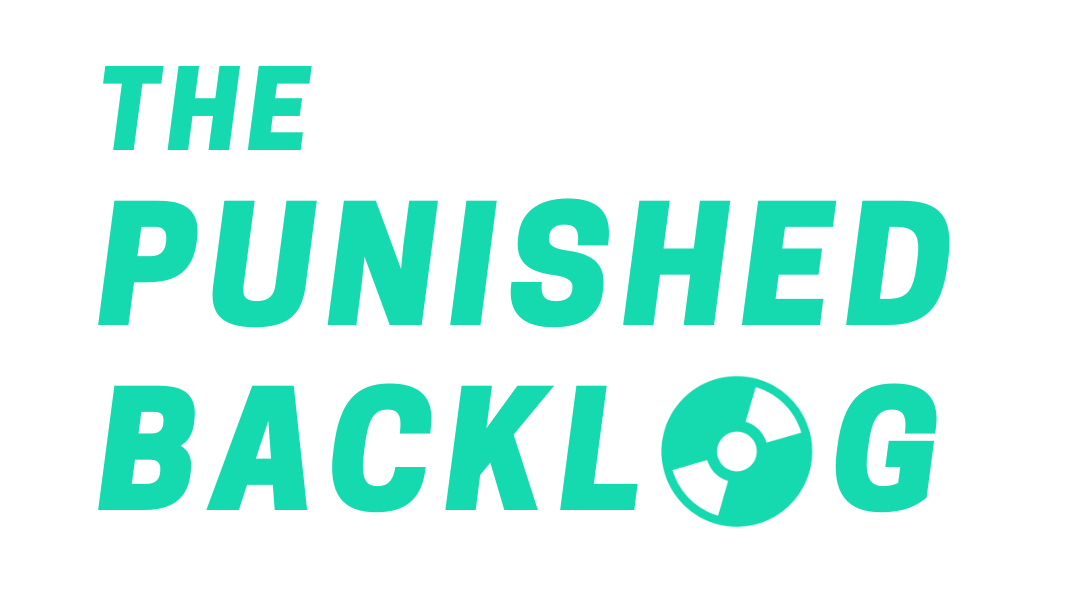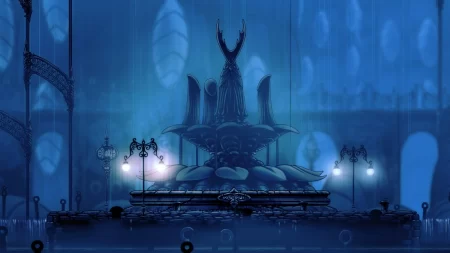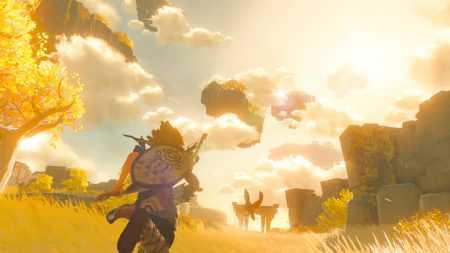A few weeks ago, the (seemingly) impossible happened: Team Cherry released Hollow Knight: Silksong to the gaming world. The long-awaited sequel to 2017’s Hollow Knight had garnered an immense level of hype over years, with fans of the original title salivating at the prospect of more bug-fighting goodness. Despite long stretches of radio silence over the release, players finally got their hands on Silksong on September 4, and thus far it has been a massive critical and commercial hit.
Unsurprisingly, many writers at The Punished Backlog immediately seized the opportunity to dive into the latest hit metroidvania, and have discussed in our internal Discord channel everything from some of the toughest stretches, most wonderful moments, and gorgeous world design. As such, we felt it was necessary to catalogue our thoughts in a more organized manner.
So, what do the writers here think?

Q: How excited were you for Hollow Knight: Silksong leading up to its release?
Sam Martinelli: It’s weird: When the game was first announced in 2019(!), I could not have been more hyped about it. Coming off the success of the first game, Silksong felt like an obvious hit, and one that I couldn’t wait to get my hands on.
Of course, as we all know well by now, years and years would pass by with little to no updates, trailers, or comments on the release. Admittedly, my interest began to wane, not because I thought the game would be bad, but because I just stopped thinking about it altogether. It’s hard to get excited about something whose existence felt as tenuous as Silksong’s. Eventually the hype train came back once it was confirmed for a September release, but it took a while to get there.
Donovan Harrell: I was relatively hyped. I truly enjoyed the first one and, as a metroidvania enthusiast, I’m always on the lookout for more gems in the genre. But over the years I started to lose interest as it became a meme.
Gary Wilson: Exceptionally! Silksong hits the two extremes of my interests: gothic weirdness and metroidvanias. Although I was not a believer that it would come out in 2025, I was always looking forward to the day when it would arrive.
Ben Rashkovich: Extremely. I’ve been a long-time lurker on r/Silksong, the premier internet home for “silkposting,” whereby Team Cherry superfans spent years sublimating their clamor for a release date (or even any indication that the game was still in development) into desperate, depraved, and increasingly inaccessible memes. I love them all. If anything, I was upset that Silksong was dropping before I finished the endgame of Clair Obscur: Expedition 33, which I’m embarrassed to admit I’m still working through. (Must find every picto!!)
David Silbert: I’ve been a Hollow Knight fan since 2017, back when the original game released for PC. After reading a glowing 10/10 review from Destructoid, I had a feeling that players were in for something truly special. I waited patiently for a Nintendo Switch port (or impatiently, if you count all the times I wrote about it) until my wish was granted in June 2018. Needless to say, I devoured the game.
So when Hollow Knight: Silksong was formally announced, I was obviously excited. That said, my anticipation in recent years had been decidedly muted. Perhaps it’s because I had waited so long for the 2018 Switch port, or maybe COVID forever recalibrated how I approach the video game hype cycle. Either way, I was resolved to the fact that Silksong wasn’t coming out anytime soon, and I was at peace with that fact… until it finally released.

Q: Did you play the first Hollow Knight? What did you think of it?
Sam: I did! I tried it out not long after it came to the first Switch. I really enjoyed it, even if I neglected to write about it all that much. I appreciated that it contained the vibes/challenge/structure of a Soulslike, but with the platforming mechanics and delightful silliness of a Nintendo game. I never got 100% completion in the original Hollow Knight, but I played the hell out of it.
Donovan: It was a great game! A very unique metroidvania with its own take on the familiar Dark Souls formula. But this time we have an art style that’s simultaneously adorable and creepy somehow. I didn’t beat all of the DLC, though, because the difficulty was off the charts.
Gary: Hollow Knight was my Game of the Year in 2017, and I still feel it is a high-water mark of the genre. Between the amazing world design, fast gameplay, and well-designed map structure, Hollow Knight holds up as a game that other metroidvanias should be trying to learn more from. While I do think other games have surpassed it, that doesn’t change the original Hollow Knight from being one of the best.
Ben: Absolutely. I think it’s fair to say Hollow Knight sort of changed my life. I spent many a late night grinding away at its bosses and platforming challenges on my dumpy laptop during the first semester of law school, and many more listening to its mournful twangs as I studied. I credit Hollow Knight, alongside Stardew Valley, with keeping lit my flame of passion for gaming. I eventually nabbed a Switch during the pandemic and evolved into the beautiful capital-g Gamer to which you now bear witness. Without Hollow Knight, I would probably have remained a worm (metaphorically).
David: I binged Hollow Knight in the days following its Switch release, but it was only during a roundtrip flight to Asia (i.e., a long flight) that the game really “clicked” for me. At first, the game put me off with its steep learning curve and brutally punishing platforming. Everything felt a bit stiff, and I wasn’t sure if I was having a great time.
Then I stuck with it. While the people on my flight dozed or watched rom-coms, I pushed through Greenpath, then Fungal Wastes and the City of Tears. The platforming began to click, and combat became easier as I acquired new badges, mask pieces, and pivotal metroidvania upgrades. I felt relieved, knowing my intuition all those months ago had been in fact correct. The game rocked.
I finished Hollow Knight shortly thereafter, then crushed its various follow-up DLC packs. The experience wasn’t without its flaws, but in a year packed with quality releases (Celeste, God of War, Red Dead Redemption 2), Hollow Knight on Switch ranked as one of my absolute favorites.

Q: How do you feel about Silksong so far? How much have you played, and how would you currently score it?
Sam: I’m 34 hours in, I’ve hit credits twice, and I’ve started [redacted], which can only be done by accomplished a particular set of side activities. I would give it just a below a 9.5/10 (maybe 9.3 or 9.4). I adore what I’ve played so far! The world gets more complex and more interesting the further you delve into it, the combat encounters and boss fights become more intricate and unique, and the environmental storytelling hits harder and harder the more you explore.
I want to explore every single crevice, talk to every friendly little bug, and take down as many big ugly bosses as I can. Even some of the most frustrating and difficult stretches are always punctuated by some beautiful moment with Sherma or a particularly helpful reward. Sure, I’ve hit a couple snags here and there — one of the Act 2 enemy gauntlets took me several frustrating hours and dozens of attempts to beat — but I’m absolutely having an incredible time with Silksong. It’s everything I’ve wanted and more.
Moreover, one of its strongest features is that whenever I think, “Okay, I’m probably done with this for now,” I get sucked into a new region, a new boss fight, or a new set of quests. It’s a game I keep thinking I’ll want to put down, but I never do.
Donovan: Right now, it’s honestly getting a 7/10 for me. I haven’t gotten too far into it yet, but what I have played has been unbelievably frustrating, and I feel like I’m fighting the frustrating design decisions more than the enemies. The beads economy is out of whack. I keep losing track of the map lady, and I have to use a tool slot just so I can see where I am in the map? Insane. So far, what I’ve seen hasn’t really innovated on what made the first one so great.
Gary: I am into Act 2, and I would give it a 9/10. It is certainly the game I wanted, although I do have some issues throughout. The gameplay changes are equal parts welcome and frustrating, leading to more challenges than needed. But, I also feel Silksong is a very different game from Hollow Knight, and taking it at its own merits, its an amazing product.
Ben: 9.999/10. I’m nearing the end of Act 1… I think. There’s an obvious “next place to go” for the story, but still quite a few paths left to tread in the areas I’ve already explored and plenty of secrets left to uncover, based on my cursory skims of the subreddit and wiki. It’s been excellent. I’ll go more into detail in the following answers, but it’s impossible to put down, handily meeting and then obliterating my expectations. This game feels designed for me.
David: After about 40 hours with Silksong, I’ve settled at a 9.0/10 so far. For context, I’ve joked with Sam that 2025 feels like the “Year of the Nines,” with releases like Split Fiction, Donkey Kong Bananza, and Hollow Knight: Silksong only furthering my argument.
I’ve technically “completed” the game and seen the credits — though anyone who has 100%’d the game will know that’s a red herring the first time around. The reality is, I’ve explored so much of the game, with so many upgrades, NPCs, side quests, and fights still to discover. And that’s perfectly fine by me.
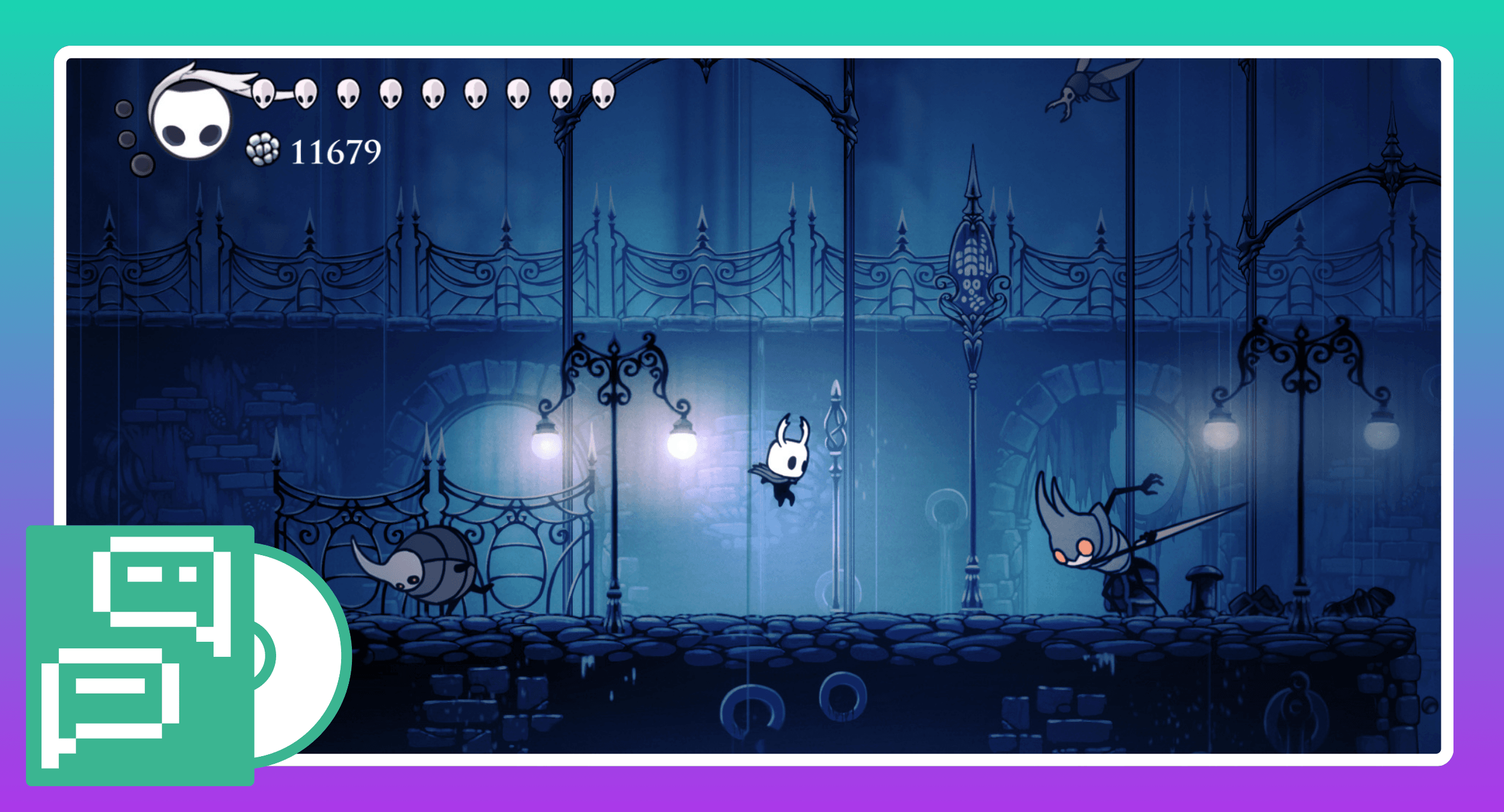
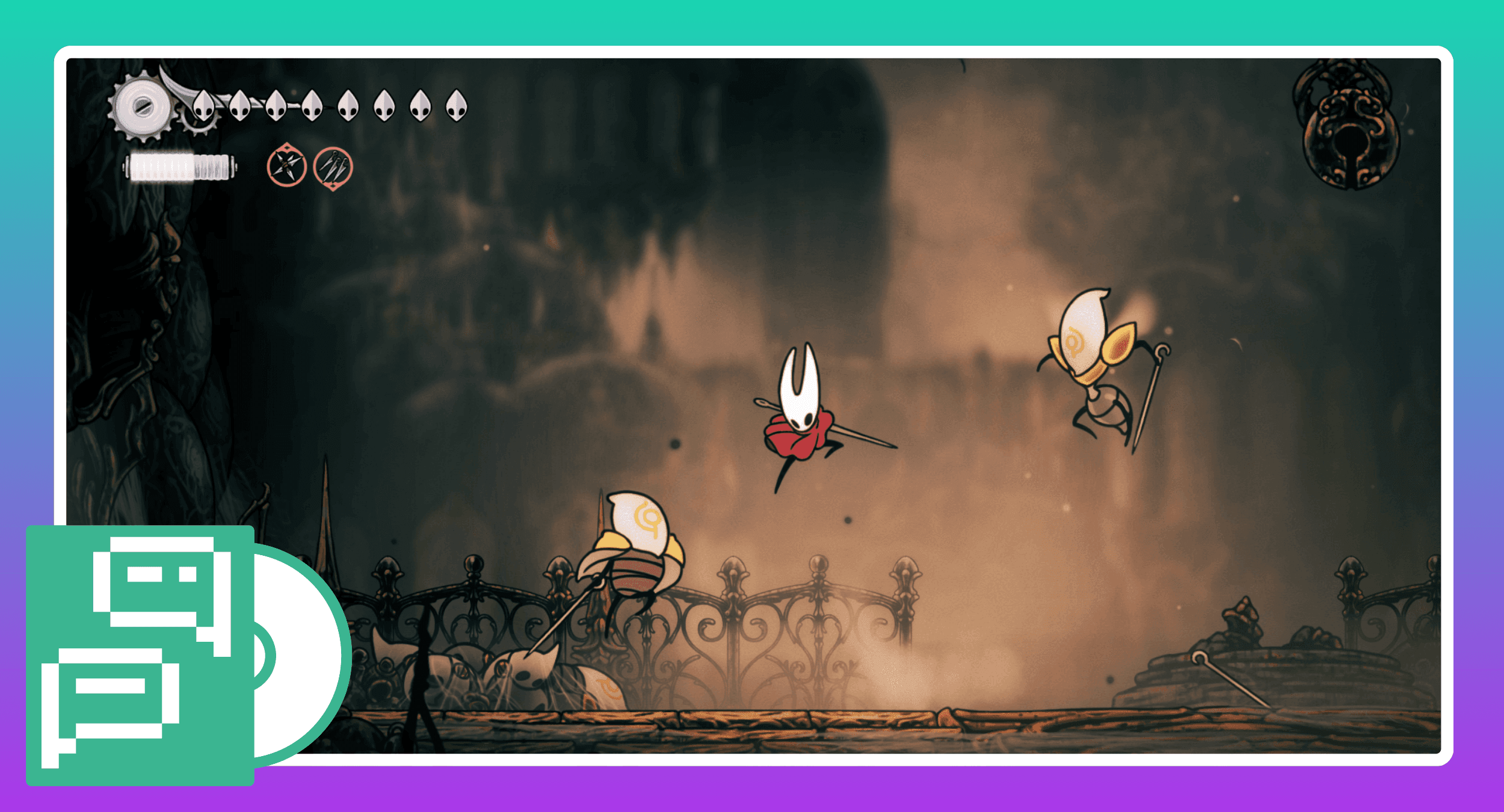
Q: In particular, how does it compare to the first Hollow Knight?
Sam: Right now, I would say Silksong is the better game. Its boss battles are more engaging and delightful than the first, there’s more of a cohesive narrative backdrop, and the level architecture feels more intricate and full of surprises.
I know some players miss the Charm system from the first game, where you can equip various Charms to give the player more advantages. I actually prefer Silksong’s approach, where you can create more unique Crest builds. Also, to be honest, I haven’t actually altered that much about my build: So much of the game is memorizing and reacting to particular enemies anyway, so I’m more focused on honing my own skills than making sure I have the right stuff equipped at every bench.
I do believe, however, that players should play the original Hollow Knight before playing Silksong. The latter has a kind of a steep learning curve at the start, and it’ll probably be a lot easier to someone who has already learned the mechanical language of the predecessor. Both games are great and work wonderfully in tandem with one another, but I’d give Silksong the edge.
Donovan: I think it has a mean spirited introduction to its world and is too difficult in the beginning, as opposed to the first Hollow Knight, which has a much more balanced difficulty progression. And I’m not a fan of Hornet’s dive kick as opposed to the original knight’s pogo mechanic. The moody atmosphere and storytelling are both fine, though.
Gary: In Hollow Knight, gameplay revolves around movement and flow in a way that is different than the early parts of Silksong. Dashes and aerial attacks are more important in the original game, with a heavier focus on acrobatics. Silksong, on the other hand, is much more about feet on the ground and learning patterns as you begin. Corridors are tighter, enemies have longer swings, and your attacks reach further. It almost becomes a game of parrying without a true parry mechanic.
Now, is this a good or bad thing? Neither. It’s different. And if you approach Silksong thinking its just more Hollow Knight, you’ll struggle. But taking it for what it is, I think it’s fantastic. Especially as new mechanics get layered on top, bringing back more of that aerial ballet.
Ben: I’m loving Silksong for all the reasons I found Hollow Knight to be transcendent and then some. The combat is far more fluid and dynamic, with the decision space of customization both more constrained and more creative — i.e., Silksong’s Crest/Tool combinations feel expressive in a way that Hollow Knight’s Charm slots might not in 2025. The sound and art design are unsurprisingly incredible, and the map structure is several orders of magnitude more diverse and interconnected than Hollow Knight’s. It’s a feat: Silksong feels both tighter and more expansive than its predecessor. Obviously I’m a ways away from finishing it, so take that with a hearty mound of salt, but that’s my impression from the hours I’ve already spent as well as from the minute-to-minute experience.
All that aside, there is one big comparator that I’ve been mulling over especially: some combination of theme, story, and vibe. Hollow Knight is about history, memory, and decay; the expectations of others and the purpose we choose; and the long, deep shadows of the things we worship. The Knight, a literal empty vessel, is driven to descend into the depths of Hallownest by forces outside its ken and control. Friendly bugs are few and far between, and there are almost no communities to speak of. It’s a bleak world, where brief reprieves are often quiet, lonely spots of safety hidden in endlessly hostile terrain.

Silksong takes a different tack. It is about community, I think, at least in part. It’s about the traditions that communities carry, the securities and dangers that belonging can bring, the camaraderie and tensions necessitated by cohabitation in one (albeit big) world. Communities are peppered throughout the world, from the pilgrim town of Bone Bottom to the traveling Flea Caravan, and more besides that I won’t spoil. Even individuals have ties and relationships in a way that the bugs of Hollow Knight rarely did, at least in my recollection: Isolated scientists have helpful apprentices; one town’s merchant relies on an itinerant courier. Not to get too Lit 101, but Hollow Knight concerns shadows cast while in Silksong we have silk that binds.
Of course, this accompanies the game’s biggest change: Hornet is a character with personality, speech, and intrinsic motivation. She is calm and deadly, curious but pragmatic. Her engagement with the world is specific and driven, buoyed by excellent dialogue — spare, evocative, musical. Unlike in Hollow Knight, the world of Silksong is alive and energetic and its protagonist keeps story at the forefront, not just in the background. It’s a welcome difference to me.
David: It’s certainly comparable, though I’m not sure if Silksong quite lives up to its predecessor. The game puts a firm emphasis on movement, with Hornet having access to a dash, glide, harpoon, and various other tools that let her bob and weave through the land of Pharloom. It’s an experience that feels reminiscent of the original Hollow Knight, yet also starkly different.
Therein lies Silksong‘s greatest strength — its uniqueness — yet also its greatest weakness: It’s perhaps too unique for its own good. Don’t get me wrong: I’ve come to love Hornet’s speedier kit, and I imagine I’ll find the original Hollow Knight to feel quite sluggish (and not due to the bugs) by comparison. That said, there are times where I feel like Silksong’s world and fights were never intended for such fast-moving mechanics. Often, I avoid sprinting and slashing in favor of more risk-averse hops and pecks. And who knows? Maybe that was always the intent for Hornet’s journey. But to me, it just doesn’t feel true to her character.
For skilled players, I have no doubt Silksong plays like a dream. I’ve experienced glimmers of this myself. But for more everyday players who just want a standard metroidvania with Soulslike elements, I’m afraid Silksong may err too far toward the action genre to please everyone. This truly is the Bloodborne to Hollow Knight’s Dark Souls; I’m just not sure whether this transition was the right choice.

Q: What’s been a highlight?
Sam: I’d like to say some of the visual design or classic fights, but I truly just appreciate how narratively buttoned-up everything feels. I’m less interested in the specific plot than I am in how every environment tells its own story, and how progressing from some of the naturally hostile locales in Act 1 to the downtrodden steampunk-ish structures of Act 2 tells a story on its own. Plus, meeting NPCs over and over again throughout the experience (much like in the first game) helps everything feel a little more grounded. Silksong’s story is one that can only really be understood while playing through the game itself, and I typically believe that’s a sign of a strong video game narrative.
Donovan: The art style. The backgrounds pop with so much life, the enemies have such interesting animations, and everything is so fluid! I also love how the backgrounds and enemies blend into each other as you traverse the world.
Gary: The area designs have been killer. While nothing has taken my breath away the same way that the City of Tears did in the original Hollow Knight, I have absolutely loved the variety in environments. Especially the areas with larger zones, like Deep Docks and the Blasted Steps.
Ben: The characters, and especially Hornet. The era of the silent protagonist is hopefully over for now, and I’m beyond glad that Team Cherry opted to embrace a narrative with a particular voice and view. In Hollow Knight, I would exhaust every NPC’s dialogue to get all the lore. In Silksong, I want to see how Hornet responds, especially to the quirkier characters with more outlandish requests. I’ve not yet been disappointed.
David: The entirety of Act 2. The first 10 to 15 hours of Silksong are enjoyable, if a bit overtuned (see: next question), but it’s the next 15 to 30 hours that are truly sublime. The Citadel is a magical playground, filled with great bosses, challenging-but-rewarding Kaizo gauntlets, and memorable tracks from composer Christopher Larkin. Almost every issue I had with Silksong was addressed in Act 2, and though I’ve yet to really scratch the surface of the game’s final act, I can’t wait to see what lies in store.

Q: What’s been a lowlight?
Sam: The rosary bead economy is really frustrating at the start. You need rosary beads to buy stuff, including access to certain benches and fast-travel stations, but early on in the game such beads are fairly rare. Only some enemies drop them at all, and they roll away so quickly you might lose them completely if they fall down a hole or onto a spike trap.
Plus, Silksong continues the same system from Hollow Knight (and Dark Souls before it) where you drop your rosaries where you die, potentially losing them forever if you fail to retrieve them. I understand why this system exists, as it tasks the player with actually spending the rosaries and being judicious about collecting them. Still, there were so many times in the early hours where I didn’t have enough on me to unlock a bench near a tough boss fight and had to grind for more, which is never fun.
Donovan: The difficulty and map navigation.
Gary: The map system still sucks. I get it, but I don’t like it.
Ben: There are a few choices I’ve bumped into that don’t enhance the game for me, and that’s disappointing. They’re not strictly difficulty-related, although they do make the game “harder” in the sense that they introduce friction between what I want to do and how easy it is to do that thing. I’ll err on the side of avoiding spoilers by speaking in overly general terms, but by and large I’m referring to the resource economy. What purpose do shards really serve? Why are certain tools capped by restraints other than shards as well? Why do some benches and travel stations cost so much to unlock? I don’t see how these decisions help to pace or progress-gate the game; they just seem to encourage grinding. Maybe I’m wrong and will come to appreciate these features as the game opens up, but at this point, they feel needlessly limiting.
David: The beginning. The first 10 or so hours of Silksong were fun at times, but also surprisingly frustrating. Take just the opening area, in which Hornet climbs out of a pit to reach the town of Bone Bottom. As I was exploring the area, I jumped into a hole (expecting some sort of secret room) only to be hurtled all the way back down to where I started.
It was infuriating. This was supposed to be a tutorial level! And while Silksong generally refrains from trolling players (with some exceptions… always check where you sit), I couldn’t help but feel that Act 1 was unnecessary cruel. But I know we’ll get to that in a bit.

Q: Much has been made about the game’s difficulty, especially compared to its predecessor. Do you find it especially hard? Why or why not?
Sam: Call me a sicko, but… I don’t think this game is actually that hard?
To be clear, I’m not saying that A) Silksong is easy by any means, B) I’m some kind of Gamer God (I frequently play games on lower difficulties and have never beaten a FromSoft game), or C) the criticisms of its difficulty from those struggling with the game are in any way invalid. But the way so many people are grousing about Silksong’s approach to difficulty has made me feel at times like I’ve been playing a totally different game. Yeah, it’s tough. Most boss encounters take multiple tries. Even the small enemies early on can do a ton of damage on each hit. Every single path between benches is a gauntlet of its own.
Here’s my problem: I not only have described Silksong, but also the first Hollow Knight, Dark Souls, Bloodborne, and every other damn Soulslike that has emerged over the past decade and a half. Sure, these games aren’t all exactly the same, and they approach challenge in their own particular ways. I just don’t think Silksong is a particularly egregious version of this, and I’m a little surprised it’s drawn this kind of scrutiny. Anecdotally, I’ve seen people who have no issue 100%ing Shadow of the Erdtree say that this game is too much for them at times, and I find that astounding, especially as someone who took at least 20 tries to beat the first main boss in Dark Souls III.
If this is the game that causes people to finally support more difficulty options in games, that’s great! I just can’t believe THIS would be the game that would make that happen. Maybe there’s some late-game bosses that make me lose my shit. Until then, I’ll continue to be baffled at the discourse.
Donovan: Absolutely. It’s been harder because more enemies in the beginning take away two masks of health, making it more difficult to progress than in the first one. The dive kick has much more of a learning curve to get the angles right, making Hornet feel less intuitive overall.
Gary: It is certainly difficult, and I do not want to take away from anyone who feels it is difficult. I, personally, have not struggled beyond what I expected to. Hollow Knight was a hard game; Silksong is also a hard game, and my expectations were met there. However, I do think one problem with the difficulty at the beginning of the game is that it was originally designed as post-game DLC. It feels like an experience that builds on the end of the original Hollow Knight, and I wouldn’t be surprised if Team Cherry intended it for players familiar with all of that game’s upgrades and skills. Eventually, Silksong finds it own identity and the difficulty makes sense. But in the beginning, it can be a struggle.

Ben: It’s a difficult game, but I haven’t found it as difficult as the almighty Discourse had me believing. Granted, I love Sekiro, Celeste’s B-sides, and Expedition 33 on Hard, so I’m definitely a glutton for that “very hard, but fair, but yeah very hard still” gaming experience. I’ve been especially confused by the commentary on a few Act 1 bosses who I felt were challenging but extremely learnable, especially as (like Elden Ring) Silksong gives ample opportunity for players to explore alternative paths and bulk up their gear before most bosses. Similarly, the “gauntlet” rooms can be frustrating, but I’ve ultimately found them to be an interesting change of pace and an opportunity to engage with Silksong’s absolutely superb enemy design. It’s not an easy game by any means, but it’s a far cry from bullshit.
That said, I am glad Team Cherry knocked down the damage dealt from some environmental obstacles and projectiles. That was before I booted up the game, but it did sound excessive.
David: I don’t find it extraordinarily hard, but I do find it hard relative to the original game — especially when you compare both games’ opening hours.
In Hollow Knight, the introduction felt like a gradual climb. You were weak, as in any metroidvania, but no one boss or section felt insurmountable; the game always had another powerup around the corner to give you a leg up. Charms also felt more plentiful, with enough wiggle room to allow each player to adopt a gameplay style that felt true to them.
In Silksong, the opening feels a lot more restrictive. Hornet’s tools are harder to come by and far more situational. Crests, a new mechanic that allows you to swap out preset attacks and tools at a bench, each require hard-to-find “Memory Slots” to use, which discourages experimentation. Enemies also often hit for two health points (something left for the late-game in OG Hollow Knight), which isn’t exactly chump change — you only start out with five. It wasn’t until I assembled four mask shards (not easy) that I finally had room to breathe in Silksong.
For some, the difficulty will be considered a boon. For me, it’s been a mixed bag to say the least.

Q: Do you plan on 100%ing the game at any point?
Sam: Probably not, but not because I don’t think it’s worth it. I just rarely think games like this are worth 100%ing, especially since the last 5%-10% will surely involve hours of backtracking and repetition. Still, I plan to play a ton of this game, at least reaching for completion even if I fail to actually complete everything.
Donovan: No. My blood pressure can’t take it.
Gary: Probably not 100%, simply because it is a busy year for releases. But I will certainly hit the true credits.
Ben: Absolutely. I’m cursed with completionist brain, unless a game is determined to waste my time with inane amounts of meaningless collectibles or content locked behind horrible racing mini-games. As far as I can tell, Silksong respects my time more than most games I’ve played, and the act of discovery is half the fun in a good metroidvania.
David: I have to. You know me; if a game makes it relatively easy and rewarding to see and do everything, I’m there. I’m not sure how easy Silksong will be to 100%, but I’m sure as the sky is blue that it’ll be rewarding.
As Kyle Bosman said in a recent Delayed Input video, Team Cherry has his trust. Based on everything I’ve played, they have mine as well.

Q: Silksong’s seven-year development was notoriously long, and its disappearance from most industry events became a meme unto itself. Do you think it has lived up to the hype?
Sam: Absolutely! People can get pretty carried away with yearslong video game hype cycles, but if that Bloomberg report is any indication, all that extra time was used to actually experiment with and enhance various ideas. Sure, the “no Silksong?!” memes are now a thing of the past, but it seems like Team Cherry took a long time to craft exactly the game they wanted to make, and it’s a real treat at that. Gaming would be in a better place if every studio had the time, resources, and flexibility to make something as special as Silksong.
Donovan: No. I don’t think it could’ve ever lived up to its hype.
Gary: Yes, and perhaps exceeded it from my side.
Ben: I do, in part because the hype was basically “this game will come out I hope.” And it did! It came out! Had Team Cherry made Hollow Knight 2, I think we still would be celebrating the release of a legendary experience. To me, Silksong is a tier above that, so I’m absolutely satisfied. Team Cherry is one of those devs who I will trust no matter what.
David: Nothing is worth seven years of hype. I waited an eternity for several big-name games — Final Fantasy XV, The Last Guardian, Kingdom Hearts III — and every time, I came away disappointed. As an industry, we need to do better about setting realistic expectations as creators, and also communicating those expectations to consumers.
That said, something feels different this time around. Maybe it’s because 2025 had so many surprise hits (Blue Prince, Split Fiction, Clair Obscur: Expedition 33), or because Silksong only cost $20, or because I recognize that this is the ultimate first-world problem, but I’m feeling more generous with my assessment of Team Cherry’s rollout. Hollow Knight: Silksong may not be worth the hype, but it’s a damn good game all the same.

Q: Is Silksong a serious Game of the Year contender, in your mind?
Sam: 100%. I still might give the edge to a certain tie-wearing ape, but Silksong is basically neck-and-neck with that one. I’m also very much prepared for the possibility that Silksong can get even better toward the finish line, so we’ll see where I end up in December. At this very moment, though, Silksong is one of this year’s best games, and I know I’m not alone in saying this.
Donovan: I can see that based off popularity alone, it’d be a contender, but it’s been a year full of heavy hitters. And some are still yet to come.
Gary: Absolutely. I’m not sure it will make it to the top, but definitely a strong contender.
Ben: Not a doubt. Hollow Knight remains one of the greatest games ever made, and assuming Silksong’s quality remains even for the rest of my playthrough, I’ll like it even more. The competition this year will be pretty crowded — Expedition 33, Ghost of Yōtei, Hades II, Kingdom Come: Deliverance II, Elden Ring: Nightreign, Donkey Kong Bananza… It’ll be tough! I don’t even know what I’d vote for! Why don’t they spread these games out for me???
David: Absolutely. I’ve played some terrific games this year, but Silksong is right in the thick of it. There are still plenty of other games scheduled to come out this fall and holiday (Hades II, Metroid Prime 4: Beyond, Ghost of Yōtei), so Silksong has a steep hill to climb, but I’m optimistic it’ll place highly on my annual “Best of Year” list come December.
How do you feel about Silksong so far? Let us know in the comments!

